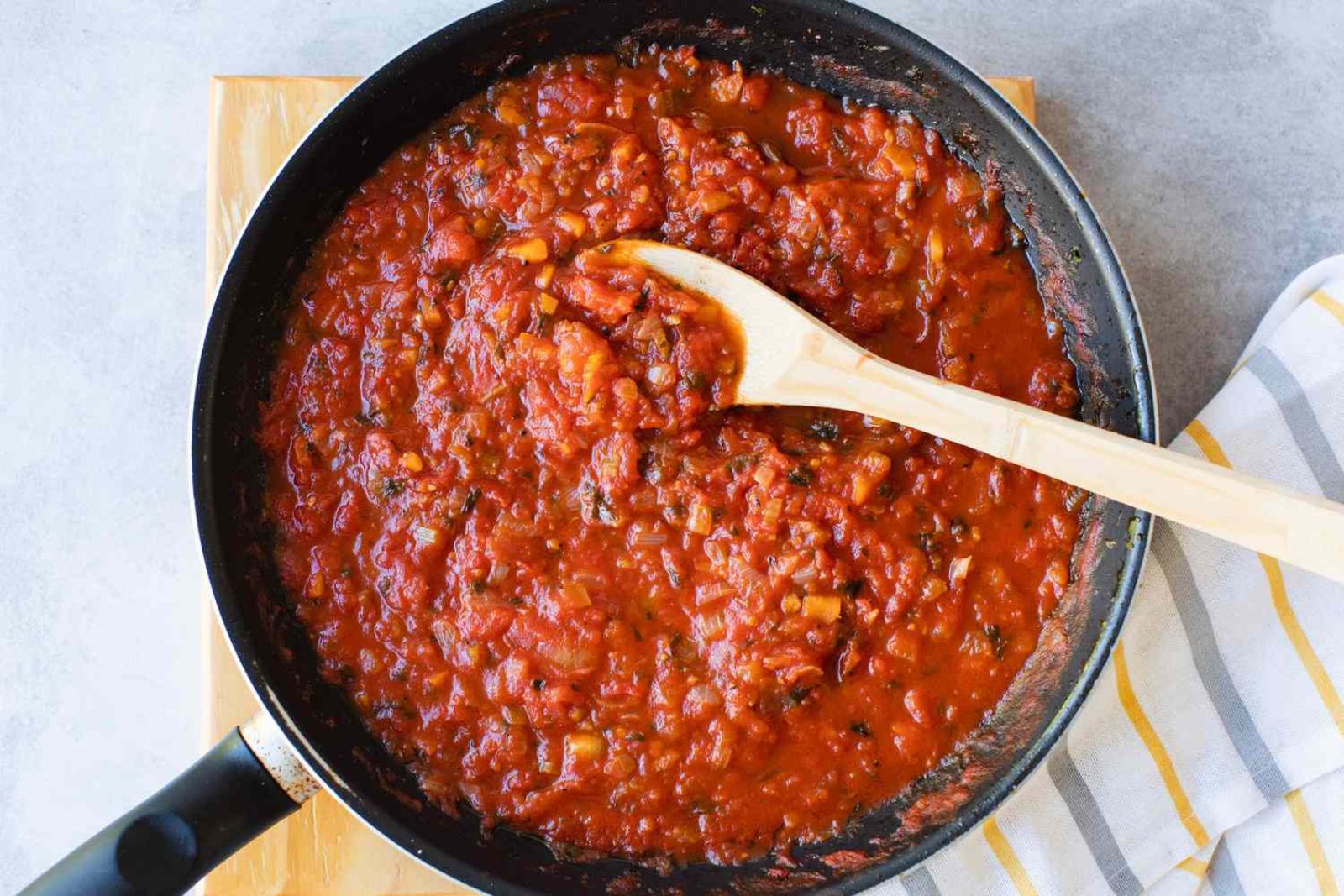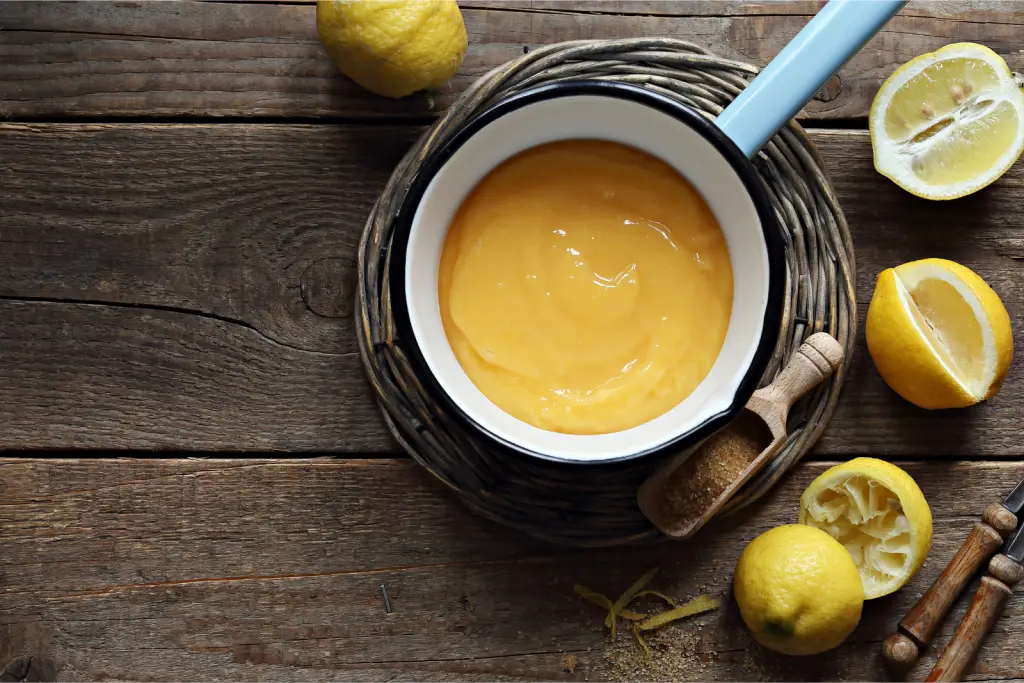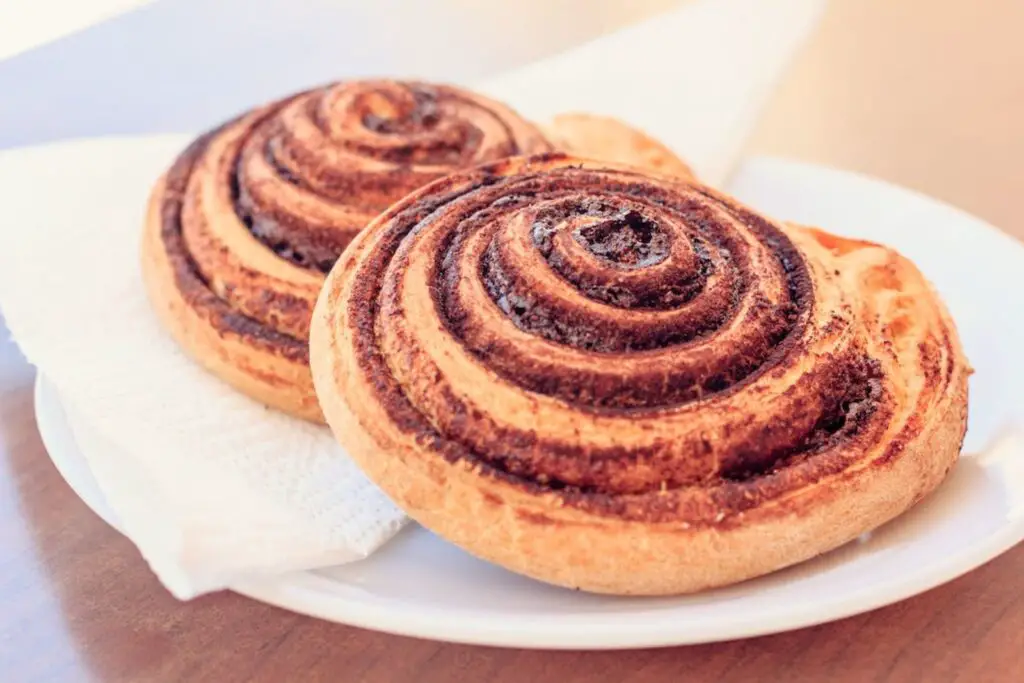
Pasta sauce is a versatile and delicious addition to any Italian-inspired meal. Whether you’ve made a large batch of homemade pasta sauce or bought a jar from the store, freezing it can be a convenient way to preserve its flavors for future use. Freezing pasta sauce allows you to have a quick and easy meal option on hand whenever you need it. By following a few simple steps, you can successfully freeze pasta sauce and ensure it maintains its taste and quality. In this article, we will provide a comprehensive guide on how to freeze pasta sauce effectively.
Here’s a step-by-step guide on how to freeze pasta sauce:
Step 1: Prepare the pasta sauce
To begin the process of freezing pasta sauce, you need to prepare the sauce itself. You have two options: you can either make your own pasta sauce from scratch using your favorite recipe, or you can use a pre-made sauce from the store. Whichever option you choose, it’s essential to ensure that the sauce is cooked to your desired consistency and flavor before moving on to the freezing process.
If you decide to make your own pasta sauce, gather the necessary ingredients and follow your preferred recipe. This allows you to customize the flavors and ingredients to your liking. Whether you opt for a classic tomato-based sauce, a creamy Alfredo sauce, or a spicy arrabbiata sauce, make sure to follow the recipe instructions carefully to achieve the desired results.
On the other hand, if you prefer the convenience of a pre-made sauce, select a high-quality brand that suits your taste preferences. There is a wide variety of pre-made pasta sauces available in grocery stores, offering options like marinara, bolognese, pesto, or even specialty sauces. Look for sauces that use natural ingredients and have a rich flavor profile.
During the preparation stage, it’s crucial to pay attention to the consistency and flavor of the pasta sauce. Ensure that it reaches the desired thickness and texture, as these factors can affect the sauce’s quality after freezing. Adjust the seasoning, spices, and herbs as needed to achieve the ideal flavor that you enjoy.
Step 2: Cool the sauce
After preparing your pasta sauce, it’s important to allow it to cool completely before proceeding with the freezing process. Cooling the sauce is a crucial step that helps preserve its quality and prevents the formation of undesirable ice crystals.
When the pasta sauce is hot, its temperature is significantly higher than the ideal freezing temperature. If you were to place hot sauce directly in the freezer, it would take longer to cool down, and the temperature difference could affect the texture and taste of the sauce. Rapid cooling is important to maintain the flavors and consistency of the sauce.
To cool the pasta sauce, you have a couple of options. The first is to let it cool naturally at room temperature. Simply transfer the sauce to a heat-safe container and allow it to sit uncovered until it reaches room temperature. This process may take some time, depending on the volume of the sauce.
If you’re looking to speed up the cooling process, you can use a shallow container. Transfer the sauce to a wide, shallow container instead of leaving it in a deep pot or pan. The larger surface area allows for faster heat dissipation, helping the sauce cool down more quickly.
Additionally, stirring the sauce occasionally during the cooling process can promote even cooling and prevent any residual heat from being trapped in certain areas. This ensures that the sauce cools uniformly, minimizing the risk of hot spots that could affect the freezing process.
It’s important to note that you should never place hot sauce directly in the freezer as it can raise the temperature inside the freezer and potentially affect the quality of other frozen items. Properly cooled sauce helps maintain the integrity of both the sauce itself and the other items in your freezer.
Step 3: Portion the sauce
Once your pasta sauce has cooled completely, it’s time to portion it before freezing. Dividing the sauce into individual portions based on your needs offers several benefits, including easy portion control and flexibility when using the sauce in the future.
Portioning the sauce allows you to freeze it in smaller quantities, which can be convenient when you only need a portion of sauce for a specific meal. It eliminates the need to thaw and refreeze the entire batch, which can compromise the quality and texture of the sauce.
To portion the sauce, consider using freezer-safe containers or resealable bags specifically designed for freezing. These containers and bags are made from materials that can withstand low temperatures without cracking or becoming brittle.
Freezer-safe containers come in various sizes, so choose the ones that accommodate the portion sizes you desire. You can opt for individual serving-size containers or larger ones if you prefer to freeze multiple servings together. Make sure the containers have airtight lids to prevent freezer burn and keep the sauce fresh.
Resealable bags are an alternative option for portioning sauce. They offer flexibility in terms of space utilization and are especially useful when you have limited freezer space. Pour the sauce into the bag, leaving some headspace to allow for expansion during freezing. Squeeze out as much air as possible before sealing the bag tightly.
Can I freeze pasta sauce in glass jars?
While it is possible to freeze pasta sauce in glass jars, there are a few precautions to take. Make sure to leave sufficient headspace to allow for expansion during freezing. Additionally, it’s crucial to use freezer-safe glass jars specifically designed for freezing to prevent the risk of glass breakage. Consider using plastic containers or resealable bags as alternative options if you’re unsure about freezing in glass jars.
Can I freeze pasta sauce in plastic containers?
Absolutely! Freezing pasta sauce in plastic containers is a convenient option. Just ensure that the containers are labeled as freezer-safe to prevent any risk of leaching chemicals or warping due to extreme temperatures. Proper sealing and leaving some headspace for expansion are essential.
Can I freeze pasta sauce in ice cube trays?
Yes, freezing pasta sauce in ice cube trays is a clever way to have small portions readily available. Once frozen, transfer the sauce cubes to a freezer-safe bag or container for storage. This method is particularly useful for adding small amounts of sauce to recipes or for single servings.
Step 4: Seal the containers
Once you have portioned the pasta sauce into individual servings, the next step is to properly seal the containers or bags before placing them in the freezer. Proper sealing is crucial for maintaining the quality, flavor, and texture of the sauce during the freezing process.
If you are using containers, it’s important to leave some headspace at the top of each container. This headspace allows the sauce to expand as it freezes, preventing the containers from cracking or breaking due to the pressure caused by the expanding liquid. The recommended headspace is typically about 1/2 inch (1.27 cm) to 1 inch (2.54 cm) from the top of the container. However, you should consult the specific guidelines provided with your freezer-safe containers to ensure proper headspace.
When using resealable bags, it’s essential to remove any excess air from the bag before sealing it tightly. Excess air trapped inside the bag can lead to freezer burn, which can negatively affect the quality and taste of the sauce. Press the bag gently to squeeze out as much air as possible, starting from the bottom and moving upward. Once the air is removed, seal the bag securely to prevent any air from entering.
Properly sealed containers or bags help maintain the freshness and integrity of the pasta sauce while it’s frozen. It creates a barrier that prevents freezer odors from infiltrating the sauce and altering its flavor. Additionally, a tight seal prevents moisture loss and protects the sauce from freezer burn, which occurs when the food is exposed to air in the freezer for an extended period.
When sealing containers or bags, always ensure that the lids are tightly closed or the bags are securely sealed. This step ensures that the sauce remains in optimal condition, preserving its taste and texture until you’re ready to thaw and use it.
Step 5: Label and date the packages
After sealing the containers or bags of pasta sauce, it’s crucial to label each package with important information such as the contents and the date of freezing. This labeling step is essential for easy identification, organization, and tracking of the sauce during its time in the freezer.
Labeling the containers or bags allows you to quickly identify the specific type of pasta sauce without the need to open or thaw each package. Whether you have multiple varieties of sauce or different batches with varying ingredients, clear labeling ensures you can easily find the desired sauce when needed.
Including the date of freezing on the label is equally important. This information helps you keep track of how long the pasta sauce has been in the freezer. Over time, frozen foods can deteriorate in quality, and knowing the freezing date allows you to prioritize the use of older sauce first. It helps prevent the sauce from being stored for too long and potentially losing its flavor and texture.
When labeling the packages, it’s advisable to use permanent markers or labels that are designed to withstand freezer conditions. Freezers are cold and moist environments, and regular markers or labels may smudge or become unreadable over time. Permanent markers or labels that are resistant to moisture ensure that the information remains clear and legible throughout the freezing period.
Write the labels in a clear and visible manner, preferably on the front or top of each package. Include essential details such as the type of pasta sauce (e.g., marinara, Alfredo, pesto), any specific ingredients or variations (e.g., spicy, chunky), and the date of freezing. You can also add additional notes, such as portion sizes or any special instructions, if necessary.
Step 6: Store in the freezer
Once you have properly labeled and dated the packages of pasta sauce, it’s time to store them in the freezer. Proper storage in the freezer is crucial to maintain the quality, flavor, and safety of the sauce for an extended period.
When placing the sealed containers or bags in the freezer, it’s important to ensure they are placed on a flat surface. This helps prevent any potential leakage or spills that could occur if the packages are tilted or unsteady. It’s best to allocate a designated area in the freezer for the sauce to maintain organization and easy access.
If you have a large batch of sauce and limited freezer space, you can stack the containers with care, making sure they are stable and secure. This stacking method saves space and allows you to maximize the storage capacity of your freezer. However, it’s important to consider the weight and stability of the containers to avoid any accidents or spills.
In the case of using resealable bags, it’s recommended to lay them flat in the freezer. This flat positioning ensures that the sauce freezes evenly and maintains a consistent shape, making it easier to stack or store in limited freezer space. Remember to handle the bags with care to avoid puncturing or damaging them.
The ideal temperature for your freezer should be set at 0°F (-18°C) or below. Freezing the pasta sauce at this temperature ensures that it remains in a frozen state, preventing the growth of bacteria and other microorganisms that can lead to spoilage. It also helps preserve the flavors, textures, and nutritional value of the sauce over an extended period.
It’s important to note that frequent fluctuations in temperature should be avoided. Opening and closing the freezer door frequently or leaving it open for extended periods can cause temperature variations that may impact the quality of the frozen sauce. Try to minimize temperature fluctuations by keeping the freezer door closed as much as possible.
How long can pasta sauce last in the freezer?
Pasta sauce can typically last in the freezer for about 3 to 4 months. However, this can vary depending on the specific ingredients and preparation methods used in the sauce. It is recommended to consume the frozen pasta sauce within this timeframe for optimal quality and taste.
Step 7: Thaw and use the sauce
When the time comes to use the frozen pasta sauce, it’s important to thaw it properly to preserve its texture and flavor. Thawing the sauce in the refrigerator is the recommended method as it allows for a gradual defrosting process.
To begin, remove the desired portion of frozen pasta sauce from the freezer. Ensure that the container or bag is tightly sealed to prevent any potential contamination during thawing. Place the sauce in the refrigerator and allow it to thaw overnight or for approximately 8-12 hours, depending on the volume and thickness of the sauce.
Thawing the sauce in the refrigerator is preferred because it maintains a controlled and even temperature throughout the process. This gradual defrosting helps retain the texture and consistency of the sauce, preventing it from becoming watery or separating. Additionally, thawing in the refrigerator minimizes the risk of bacteria growth that can occur at higher temperatures.
Once the pasta sauce has thawed completely in the refrigerator, it’s ready to be reheated and used. Transfer the sauce to a saucepan if you prefer to reheat it on the stovetop or place it in a microwave-safe container if using the microwave.
If reheating on the stovetop, heat the sauce over medium-low heat, stirring occasionally to ensure even warming. This gentle heating process helps bring the sauce to the desired temperature without scorching or overheating it. Stirring also helps distribute the heat evenly and prevents any potential hot spots.
If using a microwave, cover the container partially or leave a vent to allow steam to escape. Heat the sauce in short intervals, typically 30-second increments, stirring after each interval to promote uniform heating. Microwaves vary in power, so it’s essential to monitor the sauce closely to prevent overheating.
Throughout the reheating process, ensure that the sauce reaches a safe temperature for consumption. A temperature of 165°F (74°C) is generally recommended to ensure any potential bacteria or pathogens are killed off.
Once the pasta sauce has reached the desired temperature, it is ready to be used in your favorite pasta dishes. Pour it over cooked pasta, toss it with vegetables, or incorporate it into lasagna or baked dishes as desired.
Other related questions
Can I refreeze pasta sauce?
It is generally safe to refreeze pasta sauce if it has been thawed properly in the refrigerator and has not been left at room temperature for an extended period. However, the quality of the sauce may be compromised with each freeze-thaw cycle, potentially resulting in changes in taste, texture, and overall quality. It is recommended to consume the sauce after the first thawing to maintain the best flavor and texture.
How do I know if the pasta sauce has gone bad after being frozen?
To determine if frozen pasta sauce has gone bad, it is important to rely on visual, olfactory, and taste cues. Examine the sauce for any signs of mold, discoloration, or unusual texture, as these may indicate spoilage. If the sauce has an off or rancid odor or taste, it is best to discard it to ensure food safety. When in doubt, it is recommended to err on the side of caution and avoid consuming the sauce if there are any noticeable changes in its appearance, smell, or taste.
Can I freeze pasta sauce with meat or vegetables?
Yes, you can freeze pasta sauce that contains meat or vegetables. However, it’s important to ensure that the sauce is thoroughly cooked before freezing to eliminate any potential bacterial growth. Keep in mind that some vegetables may experience texture changes after freezing and thawing, so choose heartier vegetables or consider blanching them before adding them to the sauce.
Can I freeze pasta sauce that has already been opened?
Yes, you can freeze pasta sauce that has already been opened. Transfer the remaining sauce to freezer-safe containers or resealable bags, ensuring proper sealing to prevent freezer burn. Remember to label and date the packages for easy identification and use it within the recommended storage time for the best results.
Can I freeze pasta sauce with cream or dairy?
Yes, you can freeze pasta sauce with cream or dairy, but it may undergo texture changes. The sauce may separate or become grainy upon thawing, affecting its overall consistency. Consider adding cream or dairy to the sauce after thawing for better results.








